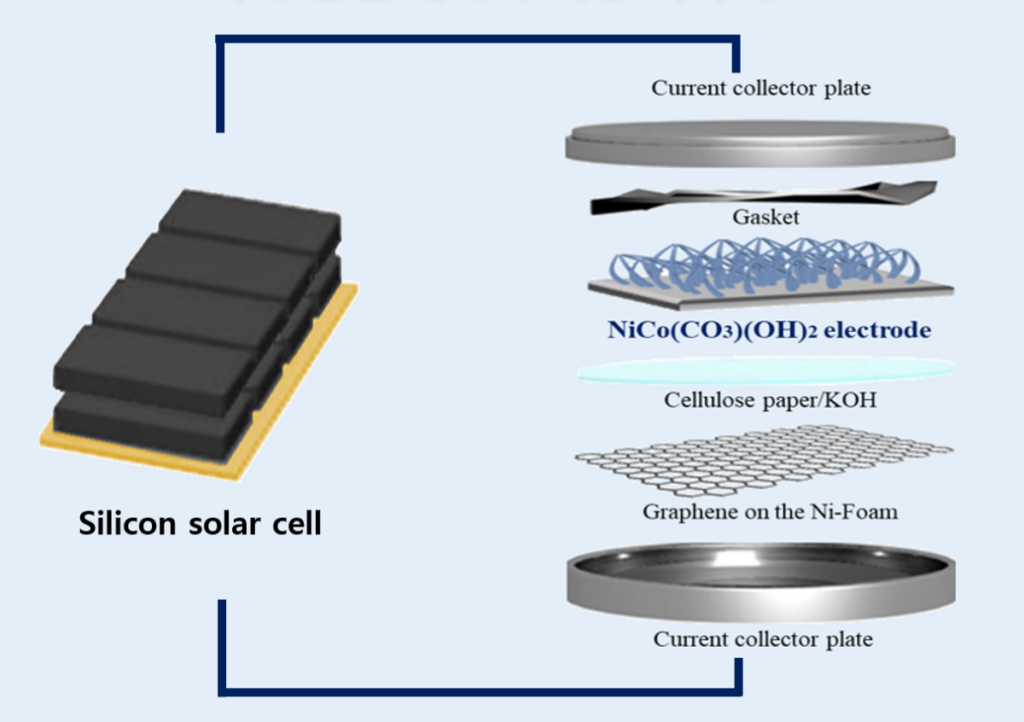Scientists in Korea have manufactured a solar charging device that can reportedly achieve a power density of 2,555.6 W kg and an energy efficiency of 63%. The system uses nickel-based compounds to improve the electrochemical performance of the electrodes.
Researchers at the Daegu Gyeongbuk Institute of Science and Technology (DGIST) in South Korea have developed a faradaic supercapacitor that can reportedly achieve high energy and power density thanks to transition metal-based electrode materials.
To build these electrodes, the scientists used a nickel-based carbonate and hydroxide composite material, which is said to optimize their conductivity and stability. They initially tested transition metal ions such as manganese (Mn), carbon monoxide (Co), copper (Cu), iron (Fe) and zinc (Zn) and found that the optimal nanostructure of the electrodes depended on the transition metals used.
“Electrodes with optimal electrochemical properties were obtained depending on the choice of transition metals,” they explained, noting that among the synthesized binary metal compounds, a compound made of Ni, Co, hydroxide (OH) offered the best performance, with a capacity retention percentage of 87.1% after 5,000 cycles.
The proposed system consists of a solar cell, a current collector plate, a gasket, the proposed electrode, a layer of cellulose paper and a second current collector plate. It also contains a graphene layer as an anode.
The system achieved energy densities of 35.5 Wh/kg and 13.6 Wh/kg and power densities of 2,555.6 W/kg and 1,2262.5 W/kg at current densities of 2 A/g and 15 A/g, respectively. It also achieved an energy efficiency of 63% and a total efficiency of 5.17% at a lighting intensity of 10 mW cm2.
According to the researchers, the power density of the device is significantly higher than that of comparable devices, which typically do not exceed 1,000 W/kg. “The system demonstrates the ability to quickly release more power, allowing immediate energy supply even for high-power devices,” they explained. “Additionally, performance showed minimal degradation during repeated charge and discharge cycles, confirming the long-term usability of the device.”
Looking ahead, they aim to implement high-performance supercapacitors and drive forward-looking research efforts. “We will continue with follow-up research to further improve the efficiency of the self-charging device and increase its potential for commercialization,” they stated.
The system was introduced in the study “Design of high-performance binary carbonate/hydroxide Ni-based supercapacitors for photo-storage systems”, published in Energy.
This content is copyrighted and may not be reused. If you would like to collaborate with us and reuse some of our content, please contact: editors@pv-magazine.com.

